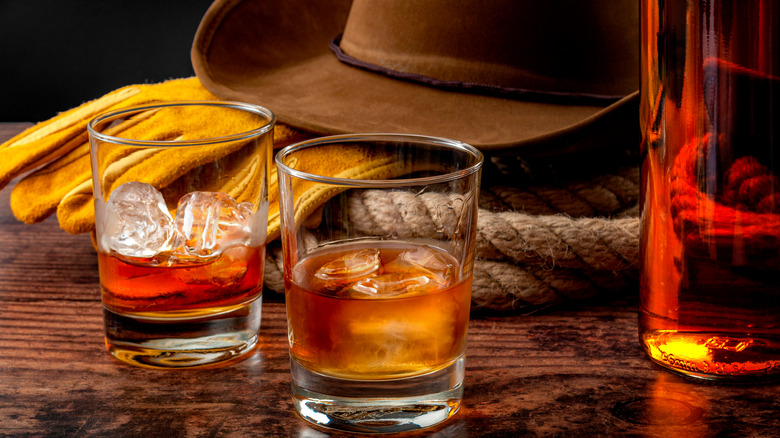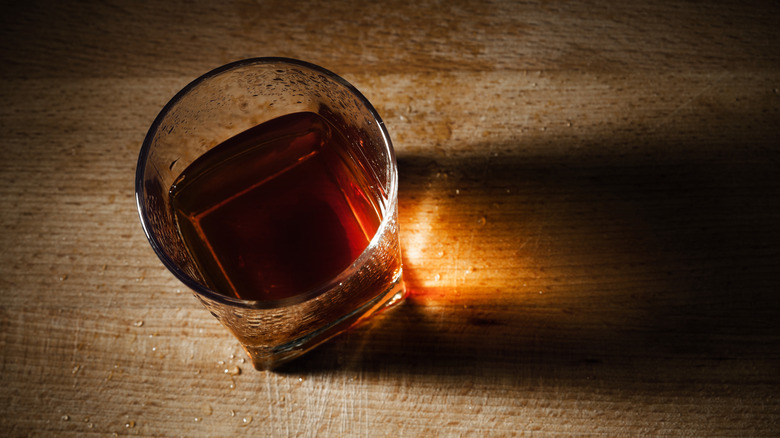The Whiskey Of The 1800s 'Wild West' Probably Tasted Horrible
If you've ever watched a movie about the Wild West, then you've undoubtedly seen a cowboy push through the swinging double doors of a frontier saloon and belly up to the bar for a shot of whiskey. The image is an accurate reflection of the time, in that straight whiskey was the most popular drink, according to UpThirst. Beer was a not-so-close second.
The halcyon days of the Wild West took place during the latter half of the nineteenth century, and for much of that time period beer was not noted for its quality. There are reasons for this, of course. Budweiser didn't produce the nation's first pasteurized beer in bottles until 1892, observes Immigrant Entrepreneurship, and the iconic brewery's introduction of mechanical refrigeration didn't occur until the 1880s, per Legends of America. Thus, draught beer in the Wild West tended to be warm, flat, and sometimes spoiled. As if that weren't bad enough, UpThirst notes that much of it was homebrewed by saloon proprietors.
But if the beer in the Wild West was bad, the whiskey was even worse.
How whiskey was made in the 'wild west'
You can gather that Wild West whiskey probably didn't taste that great from its nicknames alone. Strychnine and coffin varnish were among the not-so-nice monikers, recalls Serious Eats. But it wasn't just that the names were bad. So, too, were the ingredients. The aptly named Ol' Snakehead, for example, was made with real rattlesnake heads, True West Magazine points out, as well as flavoring like tobacco, blackstrap molasses, and river water.
According to Serious Eats, many of the issues regarding quality could be traced to a lack of regulation in terms of how whiskey was produced. Middlemen were a particularly noxious influence. So-called "rectifiers" would buy whiskey and grain-neutral spirits directly from distilleries, then add whatever ingredients they thought would help in marketing the stuff to saloons and wholesale buyers. These added ingredients could range from bad (molasses and burnt sugar) to downright dangerous (sulfuric acid).
Whiskey would eventually be regulated, but not until the Pure Food and Drug Act was passed in 1906. During the Wild West era, the available whiskey was frequently of the rotgut variety, or worse if it was homemade, notes Legends of America. Yes, saloons in Tombstone and Virginia City often boasted a variety of well-made whiskies, but in smaller towns or mining camps that was certainly not the case, True West Magazine explains. However, in most instances, it was just bad.

